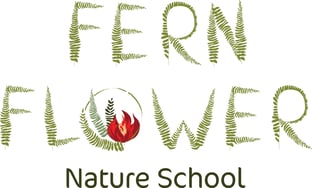Sickness and Injuries in the Daycare Setting
Managing sickness and injuries effectively is a critical part of running a daycare. Clear procedures, detailed documentation, and access to information about contagious diseases are essential for ensuring a safe and healthy environment for children and staff. This section includes templates and resources to help daycare providers handle various situations professionally and efficiently.


Keep Me Home If...
This document outlines when to keep your child home due to symptoms like fever, vomiting, diarrhea, rash, or eye infections. Children should be symptom-free for at least 24 hours before returning to Fern Flower - Nature School.
Notify the school if your child is sick and have a backup care plan ready to help maintain a healthy environment for all.
Accident & Emergency Procedures
The document outlines the emergency procedure for Fern Flower - Nature School staff in case of a severe accident. It includes steps to assess and respond to the situation, administer First Aid, contact emergency services, inform the injured party's emergency contact, coordinate with emergency responders, and ensure the safety and support of the group. It also details post-incident reporting requirements.
Accident Report
Document any accidents that occur in the daycare, including:
Date, time, and location of the incident.
Child(ren) involved and any witnesses.
Description of the injury and care provided.
Biter and Bitten Report
Record incidents involving biting behavior. This report includes:
Details of the incident.
Actions taken to care for the child who was bitten.
Steps to address the behavior of the child who bit.
Exposure Notice
Notify parents when a contagious illness has been identified in the daycare. Includes:
Name of the illness.
Symptoms to watch for.
Steps taken by the daycare to minimize exposure.
First Aid Checklist
Ensure your first aid kit is well-stocked and up-to-date. This checklist includes essential items such as bandages, antiseptic wipes, gloves, and emergency contact numbers.
Minor Incident Report Binder
The document outlines the types of reports to include in a Minor Incident Report Binder for the Nature School in British Columbia, Canada. It covers incident, first aid, behavioral, property damage, allergy/dietary concern, and medication administration reports. These records ensure well-being, safety, and organized documentation for addressing minor issues, improving policies, and maintaining a safe environment.
Major Incident Report Binder
The document outlines the contents of a Major Incident Report Binder for a Nature School in British Columbia, Canada. It includes reports on incidents, medical emergencies, evacuations, severe weather, and natural disasters. These records ensure safety, compliance, and effective response to emergencies. The binder must be regularly updated, and medical health officers must be notified within 24 hours of major incidents.
Ouch Report Book
A daily log to record very minor injuries, such as small cuts(no blood) or bruises. Includes:
Child’s name.
Description of the injury.
Care provided and signature of the caregiver.
Send Home Document
The document is a "Send Home" form used to record details when a child at the Nature School is sent home due to illness or other health-related concerns. It includes sections for documenting symptoms, reasons for dismissal, first aid provided, parent contact details, return conditions, and additional notes. Both the caregiver and parent must sign the form to confirm acknowledgment.
Allergy Sheet
Document all known allergies for each child. Includes:
Type of allergy (food, environmental, etc.).
Symptoms and severity.
Instructions for prevention and care.
Medication Authorization Form
Obtain parent/guardian consent to administer medication. Includes:
Child’s name and medication details.
Dosage, frequency, and duration.
Parent and staff signatures.
Anaphylaxis Emergency Plan
A critical plan for children with severe allergies. Includes:
Triggers and symptoms of anaphylaxis.
Emergency medication (e.g., epinephrine auto-injector).
Step-by-step response procedures.
Care Plan
For children requiring specific care due to medical, behavioral, or developmental needs. Includes:
Detailed instructions for managing the child’s unique needs.
Collaboration with parents and health professionals.

Table of Communicable Diseases
This document provides a detailed overview of various communicable diseases, including their signs and symptoms, incubation periods, modes of transmission, communicability, and prevention methods. Key diseases covered include chickenpox, the common cold, conjunctivitis, hepatitis (A, B, and C), HIV, influenza, measles, meningitis, monkeypox, MRSA, mumps, pertussis, pneumonia, rubella, SARS, scabies, shingles, smallpox, tuberculosis, VRE, West Nile Virus, and avian flu.
The document emphasizes the importance of vaccinations, good hygiene, and awareness of high-risk behaviors to prevent disease transmission and outbreaks. It is a comprehensive guide for healthcare professionals and others handling public health and infection control.
Managing Common Daycare Disease Outbreaks
Health and safety are top priorities in a daycare setting, and being prepared to manage common contagious illnesses is essential. This mini-chapter includes templates and strategies to help daycare providers effectively handle disease outbreaks while keeping families informed and maintaining a safe environment.
By monitoring attendance and illness patterns closely, daycare providers can quickly identify when the 30% threshold is met and act accordingly. This ensures the safety and well-being of everyone in the daycare community.
Location
3827 Charlton Drive, Qualicum Beach, BC, Canada, V9K 1Z3
Contacts
fernflowernatureschool@gmail.com
+1-250-299-2054
Subscribe to
our Newsletter


